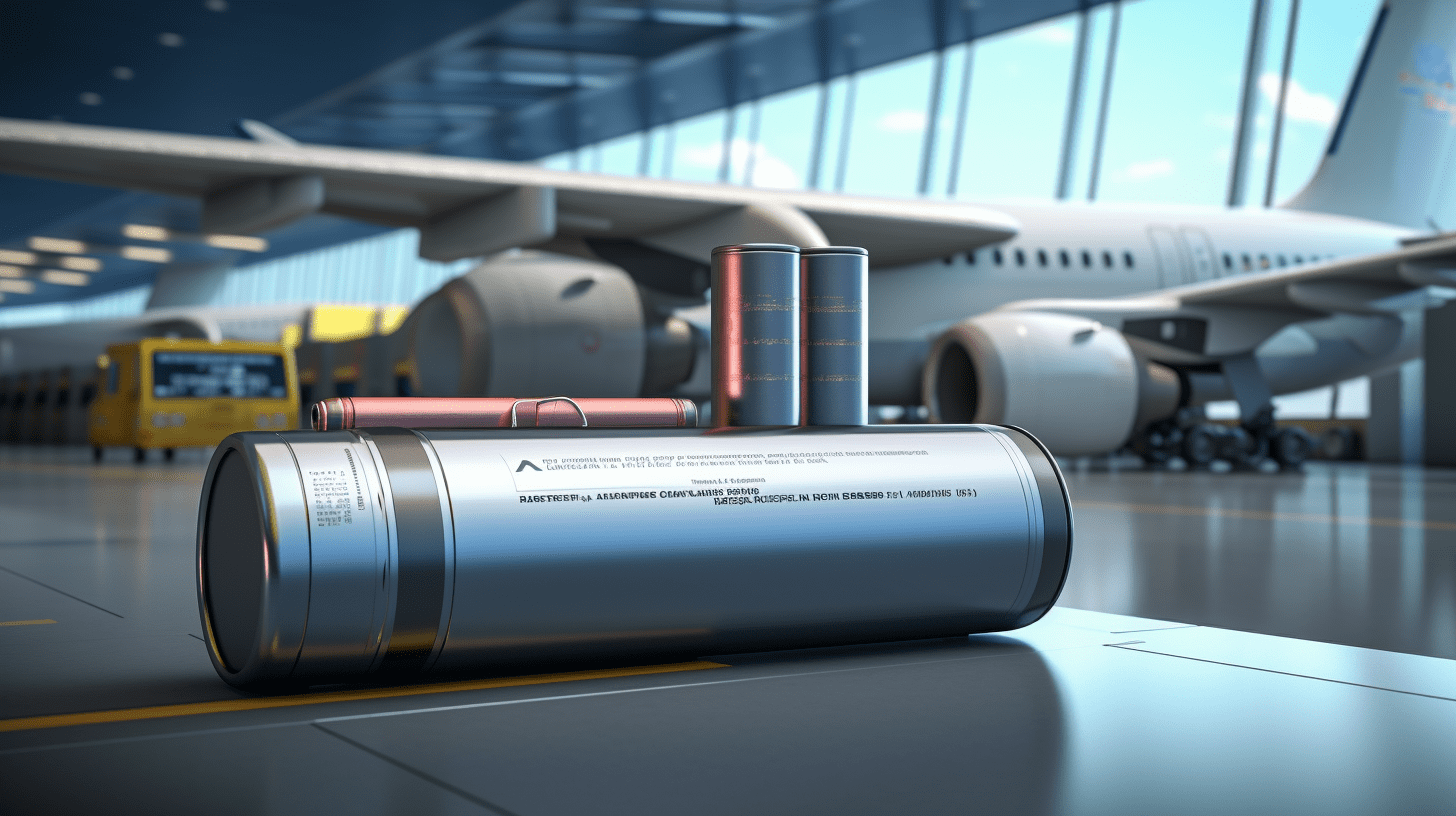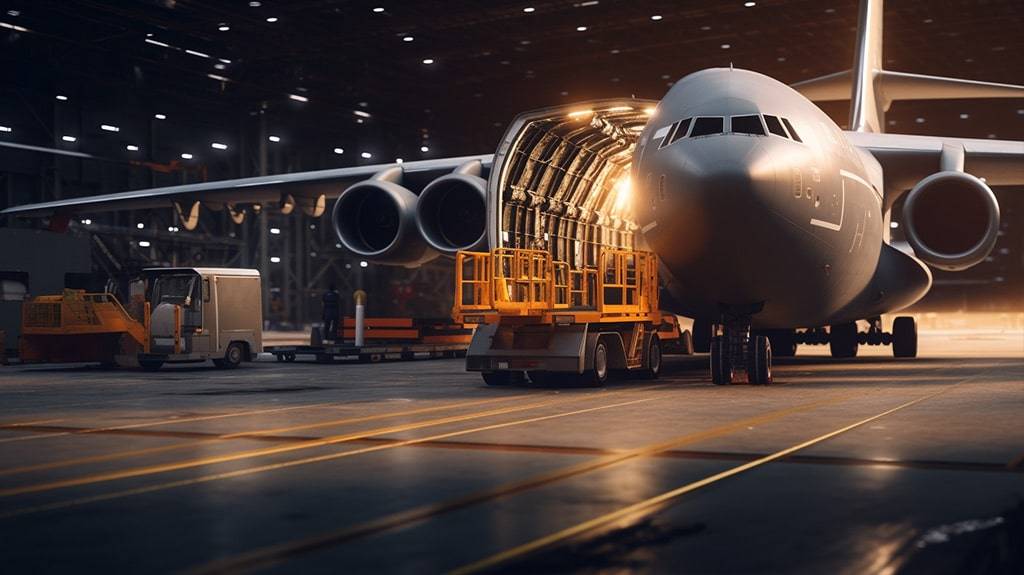Welcome passengers aboard! If you want to know the rules and regulations regarding lithium-ion batteries on airplanes, you are in the right place. In this blog post, we’ll demystify air travel and answer the burning question: Can you take lithium-ion batteries on a plane? Whether you’re a tech-savvy globetrotter or just curious about safe battery practices, we’ve got all the information you need to make sure you get through airport security without a hitch. So buckle up and get ready for an enlightening journey through TSA regulations, FAA guidelines, airline policies, safety precautions and more! Let’s dive into this exciting topic.

#post_seo_title
TSA Lithium Battery Regulations
For travel with lithium-ion batteries, the U.S. Transportation Security Administration (TSA) has specific guidelines in place to ensure the safety of all passengers. So, what do you need to know?
First, lithium-ion batteries are usually allowed on planes. However, there are some limitations to their size and power capacity. Batteries installed in devices such as laptops or smartphones can be packed in carry-on and checked luggage without any problems.
If you plan to carry a spare battery, it should only be carried in your carry-on luggage. That’s because if a battery fails or catches fire during a flight, it’s easier for the crew to react quickly when these items are within easy reach.
It is also important to note that bulk Li-ion batteries should always protect their terminals by keeping them in their original packaging or in a plastic bag. This precaution helps prevent accidental short circuits that could result in a fire.
Most consumer-grade batteries are generally acceptable in terms of battery size limits imposed by TSA regulations. A general rule is a maximum of 100 watt-hours (Wh) per battery per passenger. If your battery capacity exceeds this limit (such as some types used in professional photography equipment), you may need prior approval from the airline.
Remember, safety is paramount when traveling with lithium-ion batteries. It is critical that these batteries are not tampered with or modified in any way as doing so increases the risk of accidents during transport.
Next, let’s take a look at guidance from the Federal Aviation Administration (FAA) on lithium-ion batteries and air travel!
FAA Lithium Battery Guidelines
FAA Lithium Battery Guidelines:
When it comes to air travel, it’s critical to understand the regulations surrounding lithium-ion batteries. The Federal Aviation Administration (FAA) has established guidelines to ensure the safety of passengers and crew.
It should be noted that spare lithium-ion batteries are not allowed in checked baggage. They can only be carried on board as carry-on baggage. This is because these batteries have a higher risk of catching fire when placed in the cargo hold, and the potential hazard may go undetected.
The FAA also has restrictions on the size and number of lithium-ion batteries that can be carried on a plane. In general, passengers can carry lithium-ion batteries with a capacity up to 100 watt-hours (Wh) without special approval from the airline or the FAA. However, larger batteries between 100 Wh and 160 Wh require prior approval from the airline.
There are also restrictions on bulk lithium-ion cells or battery packs carried as spare parts for personal electronic devices such as laptops or cameras. They should be placed in their original packaging or exposed terminals covered with electrical tape to prevent short circuits.
It’s worth noting that airlines may have their own separate policies for lithium-ion batteries based on specific safety concerns. Therefore, it is recommended that you check with your airline before travelling.
By following these FAA guidelines and being aware of any additional requirements set by your chosen airline, you can ensure a smooth journey while keeping yourself and other passengers safe during air travel.
IATA Guidelines for Lithium Batteries
IATA, which stands for International Air Transport Association, is the global trade association representing airlines around the world. They have their own set of guidelines for carrying lithium batteries on board.
Lithium-ion batteries are generally allowed in carry-on and checked baggage, according to IATA regulations. However, certain restrictions and security measures need to be followed.
Spare lithium-ion batteries must be carried in carry-on baggage and not in checked baggage. This is because, if the battery catches fire during flight, it is easier to access and handle in the cabin than in the cargo hold.
The total watt-hour (Wh) rating of all batteries carried should also be considered. Lithium-ion cells or battery packs with a Wh rating greater than 100Wh but not greater than 160Wh may require airline approval prior to travel.
It’s worth noting that these guidelines may vary from airline to airline, as they have their own specific policies regarding lithium-ion batteries. Therefore, it is recommended that you check with your airline before travelling.
While IATA allows lithium batteries to be transported on board aircraft under certain conditions, it is critical to follow the IATA guidelines as well as the safe travel guidelines established by individual airlines.
Lithium battery policies for airlines and airports
Airlines and airports may have different policies regarding lithium-ion batteries, so it’s important to understand the rules before travelling. While the Transportation Security Administration (TSA), Federal Aviation Administration (FAA) and International Air Transport Association (IATA) provide guidelines, individual airlines and airports may have their own additional restrictions.
Many airlines allow lithium-ion batteries to be carried in carry-on luggage, but they must be packed properly to prevent any short circuits or damage. It is generally recommended to keep them in their original packaging or use a battery case designed for travel.
However, some airlines may limit the number of spare batteries allowed per person, or ban certain types of larger lithium-ion batteries altogether. It is best to check directly with your airline before travelling.
For airport security checkpoints, Transportation Security Administration (TSA) regulations state that electronic devices containing lithium-ion batteries should be placed in separate boxes for x-ray inspection. This includes items such as laptops, cameras, smartphones and tablets.
If you carry a spare lithium-ion battery in your carry-on luggage, it should also be easy for security officers to check if required. In general, loose or unprotected batteries are not permitted in checked baggage for safety reasons.
It is worth noting that different countries may have different regulations on the transportation of lithium-ion batteries. Some countries may require travelers to declare these items upon arrival or departure. Therefore, it is important to familiarize yourself with the specific regulations of the destination country in advance.
To ensure smooth travel when traveling with Li-ion batteries:
– Check airline policy before packing.
– Pack and protect them properly.
– Keep electronic devices with built-in batteries separate during security checks.
– Have a spare battery ready for inspection.
– Familiarize yourself with the regulations of the destination country.
Knowing and complying with the policies of airlines and airports regarding the transportation of lithium-ion batteries, you can avoid any unnecessary troubles in your air travel experience
Tips for Traveling with Lithium-Ion Batteries
Tips for Traveling with Lithium-Ion Batteries
1. Check the relevant regulations before packing
Before heading to the airport, it is crucial to familiarize yourself with the regulations regarding lithium-ion batteries. These rules may vary depending on the carrier and airline you are flying with. Please visit the TSA website or check your airline’s guidance for specific details.
2. Carry-on instead of checked baggage for maximum
To reduce the risk of damage or loss, lithium-ion batteries are generally recommended to be placed in carry-on luggage rather than checked baggage. This way, you can keep an eye on them and make sure they are handled safely throughout your journey.
3. Keep the battery in its original packaging
When traveling with lithium-ion batteries, it is best to keep them in their original packaging as much as possible. This helps prevent potential short circuits caused by contact with metal objects such as keys or coins.
4. Store spare batteries safely
If you carry spare batteries, be sure to wrap or store them individually in separate plastic bags to prevent accidental short circuits.
5. Protect battery contacts
Covering the battery contacts with tape is another precaution that helps reduce the risk of short circuits during travel.
6. Power off the device
Make sure all electronic devices powered by lithium-ion batteries are turned off before putting them away – this includes laptops, smartphones, cameras and other portable gadgets.
7. Proper packaging
Pack your electronics securely with their associated charging cables and adapters to avoid unnecessary stress when going through security.
8. Be prepared for security checks
As part of security screening procedures at airports around the world, you may be asked to remove all electronic devices from your bags for individual x-ray screening.
9. Know the specific policy of the airline
Each airline may have its own set of policies regarding lithium-ion batteries, which may include quantity or watt-hour limits per device.
10. Stay informed
It is very important to keep abreast of any situation
Understanding the Risks and Safety Precautions of Lithium Batteries
Knowing the risks and safety precautions associated with lithium batteries is critical when it comes to air travel. While these batteries have become an important part of our everyday lives, they do pose certain dangers that need to be taken seriously.
Lithium-ion batteries can overheat or catch fire if damaged, exposed to extreme temperatures, or mishandled. That’s why airlines and regulators have specific guidelines to ensure the safe transport of these batteries on planes.
To minimize the risks associated with lithium batteries during air travel:
1. Always pack lithium-ion devices in carry-on luggage, not checked luggage. If the battery catches fire in the cargo hold, which is difficult to detect and extinguish, it could cause a serious accident.
2. Put the spare battery in its original packaging or cover it with tape before putting it in the bag. This helps prevent any contact between the battery terminals and metal objects such as keys or coins that could cause a short circuit.
3. Ensure that all devices powered by lithium-ion batteries are turned off or put into sleep mode during take-off and landing as per airline regulations.
4. Avoid using damaged or swollen batteries, as they are more likely to overheat due to internal problems and pose a safety risk.
5. It is important not to exceed any limits set by airlines on portable electronic devices (PEDs) containing lithium-ion batteries – both in terms of the number allowed per person and the size limit for high-capacity power banks.
6. Please keep yourself informed of the current TSA, FAA, IATA guidelines, and individual airline policies regarding the carriage of lithium-ion batteries on flights, as individual airline regulations may vary.
By following these simple but important safety precautions, you can help mitigate the potential risks associated with using lithium-ion batteries when traveling by air.
Remember: While there are strict regulations for shipping lithium-ion batteries, that doesn’t mean you’re prevented from taking your device on a plane.




